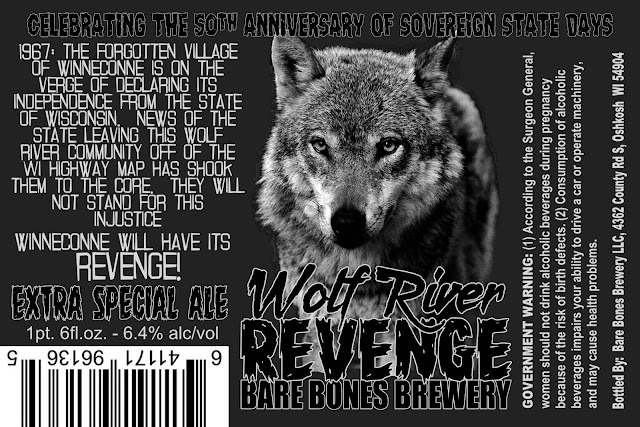The recipe for 160th Anniversary Ale was found in the brewery's archive by Point brewmaster Gabe Hopkins. I contacted the brewery and was told the recipe was dated 1905. There weren't many Wisconsin breweries making ales in 1905. Lager beer was king here at this time.
I've been sifting through old, Point Brewing Co. ads from the early 1900s. I can't find any mention of an ale being made at Point during that period. Here's a typical Point ad from 1903.
At the turn of the century, the word beer was synonymous with lager. Especially in Wisconsin. Ale was treated as a distinct category. In the 1903 ad, Pink's Pale isn't identified as either beer or ale.
Here's an ad from 1908 that seems intentionally ambiguous. The two beers are referred to simply as Brew. These could be ale or beer.
Perhaps the brewery thought such distinctions were meaningless. I've seen other ads where it's implied that Pink's Pale was beer as opposed to ale. But I haven't seen any case where it's made explicit. And I've never seen an ad from the years around 1905 indicating Point was making ale.
That doesn't mean Point didn't brew an ale. As I mentioned, lager beer was all the rage in Wisconsin in 1905. Ale was thought of as less refined. Old fashioned. If Point was brewing an ale they may well have thought it better to not brand it as such.
The thing is, Point Brewing started out making ales. Below is an ad from 1859. This appeared two years after George Ruder and Franz Wahle launched their partnership and what would become Point Brewing Company.
Stock Ale. Lager Beer. No dancing around there. However, these days when we hear Stock Ale, we tend to think of strong, English-style beers. But "Stock" was a term applied to any ale or beer that was aged.
The Stock Ale Ruder and Wahle were brewing probably had nothing to do with England. Both men were German immigrants. Ruder was from Nuremberg in Bavaria. Lager Beer country. Wahle was from the north where, in his time, ale was predominant. Ruder and Wahle's Stock Ale was probably along the lines of what's now called an Altbier. An ale that undergoes a cold aging or "lagering" period.
That brings us back to Point's 160th Anniversary Ale. The brewery's description of the beer says it was "brewed using a traditional German-style all-malt recipe." According to brewmaster Gabe Hopkins, the beer most resembles the Düsseldorf Altbier style of warm-fermented beers brewed in Germany’s North Rhine-Westphalia region.
The North Rhine-Westphalia region is where our man Franz Wahle hailed from. Wahle left Point in 1867. Was his influence still being felt there in 1905?
It would seem this type of beer is embedded in Point's DNA. You don't need to know all this stuff to enjoy the beer, but it certainly doesn't hurt. For me, it makes the experience richer.
One last thing. As I mentioned in a post the other day, that when Franz Wahle left Stevens Point, he came to Oshkosh and began brewing here. We may have more of a connection to this beer than you'd guess. But that's usually how it works with beer. What's right under our nose is often more than we imagine.
Point's 160th Anniversary Ale is only available on draft. As of this morning, it's still on at Chester V's.







































